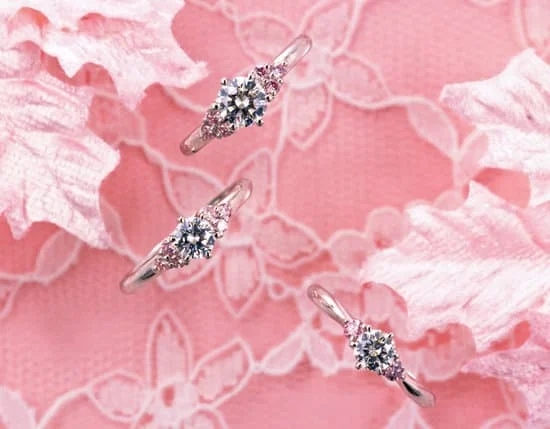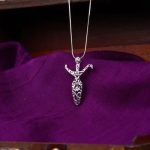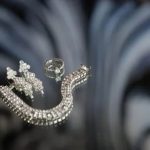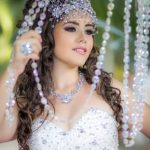Vintage beaded jewelry holds a timeless allure and elegance that can truly captivate any admirer. In this article, we will delve into the art of capturing the intricate beauty of vintage beaded jewelry through photography. Discover how to photograph vintage beaded jewelry to highlight its unique details and charm, allowing you to showcase these exquisite pieces in their full glory.
The charm of vintage beaded jewelry lies in the delicate craftsmanship and intricate designs that make each piece a work of art. By learning how to photograph vintage beaded jewelry effectively, you can immortalize these stunning creations in images that capture their beauty for posterity. From the intricate patterns of beads to the shimmering colors, photography allows you to showcase every detail that makes vintage beaded jewelry so special.
Whether you are an aspiring photographer or a passionate collector of vintage beaded jewelry, understanding how to use photography to capture these pieces is essential. Through this guide, we will explore various techniques and tips for finding the perfect light, choosing the right background, selecting the ideal camera equipment, setting up the shot, editing for enhancement, showcasing the finished product, and troubleshooting common mistakes.
Join us on this journey to master the art of photographing vintage beaded jewelry and bring out its timeless beauty in every frame captured.
Finding the Perfect Light
When it comes to photographing vintage beaded jewelry, one of the most essential elements to consider is lighting. The right light can make all the difference in capturing the intricate details and unique beauty of each piece. Natural light is often the best choice for showcasing the colors and textures of vintage beaded jewelry.
When shooting outdoors, look for a soft, diffused light that minimizes harsh shadows and highlights. Early morning or late afternoon sunlight can provide a flattering glow that enhances the jewelry’s features.
For indoor shoots, artificial lighting setups can also produce stunning results when photographing vintage beaded jewelry. Softbox lights or ring lights can help create a soft, even illumination that highlights the intricate patterns and beads in the jewelry. Experiment with different lighting angles to see how they affect the overall look of the pieces. Using a combination of natural and artificial light sources can also add depth and dimension to your photos.
Remember to adjust your camera settings accordingly based on the type of light you are using. Pay attention to white balance settings to ensure accurate color representation in your images. By mastering how to utilize both natural and artificial light effectively, you can enhance the visual appeal of vintage beaded jewelry in your photographs.
Choosing the Right Background
When photographing vintage beaded jewelry, selecting the right background is crucial in showcasing the beauty and charm of these unique pieces. The background choice can greatly impact the overall look and feel of the image, emphasizing the intricate details and colors of the jewelry. To capture the essence of vintage beaded jewelry through photography, consider these recommendations for choosing the perfect background.
Complementary Background Selection
A key aspect to keep in mind when selecting a background for vintage beaded jewelry is to choose one that complements the colors and style of the pieces. Opt for backgrounds that enhance rather than detract from the jewelry’s aesthetic appeal. Neutral backgrounds, such as soft pastels or muted tones, can help highlight the vibrant colors and intricate textures of the beads. Additionally, consider textured or patterned backgrounds that add visual interest without overwhelming the jewelry itself.
Creating a Cohesive Theme
To create a cohesive theme in your photoshoot, coordinate the background with the overall style and era of the vintage beaded jewelry. For example, if you are photographing Art Deco-inspired pieces, consider using a backdrop with geometric patterns or metallic accents to evoke the glamour of that era.
Similarly, if showcasing bohemian-style beadwork, opt for earthy tones and natural textures to complement the organic feel of the jewelry. By aligning the background with the theme of the jewelry collection, you can enhance its visual impact and appeal to potential buyers or admirers.
Showcasing Details With Depth
When choosing a background for vintage beaded jewelry photography, aim to create depth in your images by incorporating layers or props that add dimension to the composition. This can be achieved by using different textures like velvet fabric or lace drapes as backdrops to enhance both contrast and focus on details.
Experiment with various materials and settings to find what best accentuates each piece’s unique characteristics while maintaining an overall cohesive look throughout your photoshoots on how to photograph vintage beaded jewelry.
Selecting the Ideal Camera and Lenses
When it comes to photographing vintage beaded jewelry, selecting the right camera and lenses is crucial to capturing all the intricate details and beauty of these pieces. To truly showcase the fine craftsmanship of vintage jewelry, it’s important to invest in high-quality equipment that can bring out the colors and textures effectively. A good camera with a high resolution sensor can help in capturing every tiny bead and design element with clarity.
In addition to a good camera body, choosing the right lenses is equally important. For photographing vintage beaded jewelry, macro lenses are highly recommended. These lenses allow you to get up close and capture the smallest details of the jewelry, revealing the craftsmanship and artistry that goes into each piece. Macro lenses have a narrow depth of field, which helps in creating a beautiful bokeh effect that can enhance the overall appeal of your photos.
When selecting camera equipment for photographing vintage beaded jewelry, consider also investing in a tripod to ensure stability and avoid any blurriness in your shots. A remote shutter release can also come in handy to prevent camera shake when taking photos at close range with macro lenses. By using the right combination of camera body, lenses, and accessories, you can elevate your photography skills and capture stunning images of vintage beaded jewelry that truly do justice to their beauty.
Setting Up the Shot
Vintage beaded jewelry is a true work of art, with each piece carrying its own unique history and intricate details that deserve to be captured through photography. Whether you are showcasing these timeless pieces for personal enjoyment or looking to sell them online, knowing how to photograph vintage beaded jewelry can truly enhance the beauty of these accessories and attract potential buyers.
To capture the essence of vintage beaded jewelry in your photographs, it’s essential to set up the shot properly. Here are some tips on arranging your pieces for a stunning photoshoot:
- Start by selecting a clean and clutter-free surface as your backdrop. A plain white or black background can help the jewelry stand out without any distractions.
- Consider using props like antique trinkets or vintage fabric to add character and create a theme that complements the style of the jewelry.
- Arrange the beads and gems in a visually appealing way, highlighting their colors, shapes, and textures. Experiment with different layouts until you find one that best showcases the unique features of each piece.
Angles and perspectives play a crucial role in capturing the intricate details of vintage beaded jewelry. To emphasize the craftsmanship and design elements of each piece, try shooting from different angles such as top-down, side view, or close-ups. Explore various perspectives to showcase the depth and dimensionality of the jewelry, allowing viewers to appreciate its beauty from all angles.
By setting up each shot thoughtfully and experimenting with different arrangements and angles, you can create stunning photographs that not only highlight the beauty of vintage beaded jewelry but also tell a story about each unique piece’s history and craftsmanship. Mastering the art of setting up your shots will elevate your photography skills and allow you to showcase these precious accessories in their best light.
Editing for Enhancement
Vintage beaded jewelry holds a unique allure with its intricate designs and timeless appeal. Capturing the essence of these pieces through photography can be a rewarding experience, allowing enthusiasts to showcase the beauty and craftsmanship of each item. When it comes to photographing vintage beaded jewelry, editing plays a crucial role in enhancing the colors and details to truly make them stand out.
One essential technique for editing vintage beaded jewelry photos is adjusting the colors to bring out their vibrancy. This can be done by adjusting the saturation, contrast, and brightness levels to make the colors pop without looking overly saturated or artificial. Additionally, focusing on enhancing the details of the beads and intricate patterns can elevate the overall look of the jewelry in the photograph.
To further enhance vintage beaded jewelry photos, consider using software tools like Adobe Photoshop or Lightroom for more advanced editing capabilities. These programs offer features like selective color adjustments, clarity enhancements, and sharpening tools that can help refine the look of each piece of jewelry. Experimenting with different editing techniques and tools will allow you to find a style that best suits the aesthetic of the vintage beaded jewelry you are photographing.
| Editing Tips | Software Tools |
|---|---|
| Adjust colors for vibrancy | Adobe Photoshop |
| Enhance details for clarity | Adobe Lightroom |
| Experiment with different techniques | Other editing apps |
Showcasing the Finished Product
When it comes to showcasing the finished product of your beautifully photographed vintage beaded jewelry, presentation is key. Here are some ideas for presenting the final images on social media and online platforms:
- Utilize Instagram: Create a visually appealing feed by posting your jewelry photos in a cohesive theme or color scheme. Use hashtags such as #vintagejewelry or #beadedbeauty to reach a wider audience.
- Set up an Online Shop: Consider selling your vintage beaded jewelry through platforms like Etsy or Shopify. Make sure to include high-quality images that showcase the details of each piece.
- Collaborate with Influencers: Reach out to influencers or bloggers in the fashion/jewelry niche to feature your jewelry on their platforms. This can help increase visibility and credibility for your brand.
Additionally, here are some tips for creating a visually appealing portfolio or gallery for displaying the jewelry:
- Organize by Collection: If you have different collections of vintage beaded jewelry, consider organizing them into separate galleries on your website. This can help customers easily browse and find pieces they love.
- Include Close-Up Shots: Showcase the intricate details of each piece with close-up shots in your portfolio. This allows potential buyers to see the craftsmanship and uniqueness of your jewelry.
- Add Descriptions: Provide detailed descriptions for each piece of vintage beaded jewelry in your portfolio. Include information about materials used, size measurements, and any special features.
By effectively showcasing your beautifully photographed vintage beaded jewelry through social media, online platforms, and portfolios, you can attract more attention and potential customers to your unique creations. Remember to stay consistent with your branding and style across all channels to create a cohesive and professional image for your brand.
Troubleshooting and Common Mistakes
When it comes to photographing vintage beaded jewelry, there are some common mistakes that photographers often make. One of the most prevalent errors is not paying attention to reflections. Be mindful of shiny surfaces that could reflect unwanted light sources or even the camera itself. To avoid this issue, consider adjusting your positioning or using a polarizing filter to minimize reflections and create a more professional-looking image.
Another common mistake in photographing vintage beaded jewelry is overlooking shadows. Harsh shadows can distract from the beauty of the jewelry and obscure important details. To remedy this, try diffusing the light source with materials like paper or fabric, or use additional lighting to soften shadows. By controlling the direction and intensity of light, you can ensure that the focus stays on the intricate design and craftsmanship of the jewelry.
Lastly, focus problems can arise when photographing small and detailed objects like vintage beaded jewelry. Ensuring that your camera settings are optimized for capturing close-up shots is essential. Consider using manual focus to precisely target specific areas of the jewelry or employing techniques like focus stacking to achieve sharpness throughout the entire piece. Taking extra care with focusing will elevate the overall quality of your photographs and bring out the unique characteristics of each piece of vintage beaded jewelry.
| Troubleshooting Tip | Common Mistake |
|---|---|
| Avoiding reflections | Not paying attention to shiny surfaces that may reflect unwanted light sources. |
| Managing shadows | Overlooking harsh shadows that can detract from the beauty of the jewelry. |
| Focusing techniques | Addressing potential focus problems by optimizing camera settings for close-up shots. |
Conclusion
In conclusion, photographing vintage beaded jewelry requires a careful balance of capturing the intricate details and showcasing the charm of these unique pieces. By following the tips and techniques outlined in this article, individuals can effectively highlight the beauty of vintage jewelry through photography. From finding the perfect lighting to selecting the ideal background and camera equipment, each step plays a crucial role in creating stunning images that truly capture the essence of these timeless accessories.
When it comes to showcasing vintage beaded jewelry through photography, attention to detail is key. By setting up the shot with precision, experimenting with angles, and utilizing editing techniques for enhancement, photographers can bring out the vibrant colors and intricate designs of these pieces. Whether planning to display the final images on social media platforms or creating a portfolio for online galleries, presenting vintage beaded jewelry in a visually appealing manner can draw attention to their unique beauty.
In essence, mastering how to photograph vintage beaded jewelry is not just about technical skills but also about creativity and passion. With practice and experimentation, individuals can develop their own signature style when capturing these eye-catching accessories. Remember to pay attention to every aspect of the process – from lighting to editing – in order to truly showcase the elegance and allure of vintage beaded jewelry through photography.
Frequently Asked Questions
How Do You Photograph Vintage Jewelry?
Photographing vintage jewelry requires attention to detail and lighting. To showcase the uniqueness of each piece, consider using a macro lens to capture intricate details. Natural light or diffused artificial light can help highlight the jewelry’s features without causing harsh shadows.
How Do You Take Good Pictures of Handmade Jewelry?
Taking good pictures of handmade jewelry involves capturing the craftsmanship and artistry behind each piece. Using a clean, simple background will ensure that the focus remains on the jewelry itself. Experimenting with different angles and compositions can also help create visually appealing images.
What Are the Best Camera Settings for Jewelry Photography?
The best camera settings for jewelry photography depend on the desired effect and equipment being used. Generally, using a small aperture (high f-stop number) can ensure that the entire piece is in focus.
Adjusting ISO and shutter speed according to available lighting conditions can help prevent overexposure or blurriness in the images. Shooting in RAW format can also provide more flexibility during post-processing.

Welcome to my jewelry blog! My name is Sarah and I am the owner of this blog.
I love making jewelry and sharing my creations with others.
So whether you’re someone who loves wearing jewelry yourself or simply enjoys learning about it, be sure to check out my blog for insightful posts on everything related to this exciting topic!





